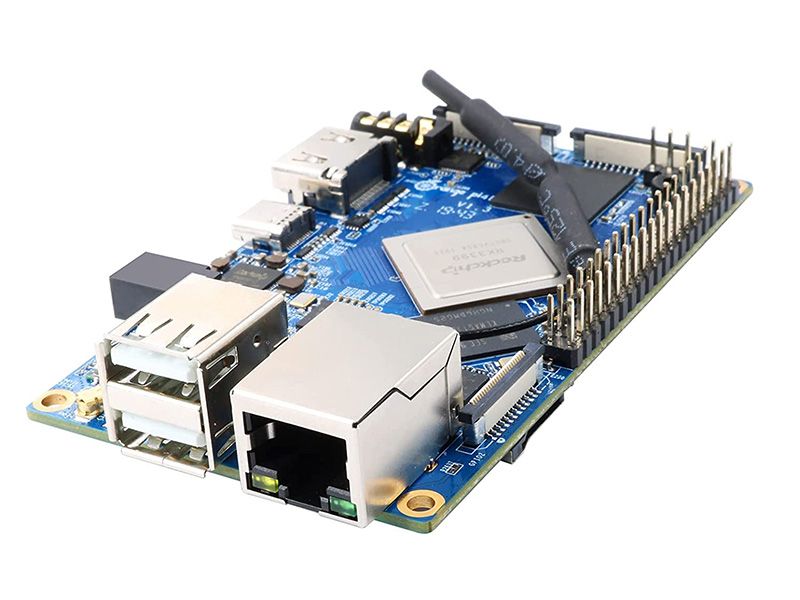
Orange Pi 4 by Shenzhen Xunlong Software CO.,Limited
Orange Pi 4 is an open-source single-board computer with dual-band wireless WiFi and Bluetooth 5.0. It is highly compact with a dimension of 56 x 91mm.
Hardware specification
- Rockchip RK3399 (28nm HKMG process)
- 6-core ARM® 64-bit processor, main frequency speeds up to 2.0GHz
- Based on the large and small size core architecture of big.LITTLE
- Dual-core Cortex-A72 (large core) + Quad-core Cortex-A53 (small core)
- Mali-T864 GPU
- Supports OpenGL ES1.1/2.0/3.0/3.1, OpenVG1.1,OpenCL, DX11, support for AFBC
- RK808 PMU
- Dual 4GB LPDDR4 + 16GB EMMC Flash
- Dual 4GB LPDDR4 +EMMC Flash (Default Empty)
- AP6256, IEEE 802.11 a/b/g/n/ac, BT5.0
- 10/100/1000Mbps Ethernet (Realtek RTL8211E)
- Output: 3.5mm Jack and HDMI2.0a Input: MIC
- 1 x HDMI 2.0 (Type-A), Supports 4K@60fps output
- 1 x DP 1.2 (Display Port), Supports 4K@60fps output
- Supports Dual MIPI-DSI (4 lines per channel
- 2 x MIPI-CSI Camera connector (MIPI_RX0, MIPI_TX1/RX1)
- 2 x USB2.0 HOST,1x USB3.0 HOST, 1 x USB3.0 Type-C
- Support RTC, on-board battery backup interface
- 3 pins Debug UART
- GPIO1 40 pins(1 x I2S, 2 x I2C, 1 x SPI/UART, 8 x GPIO
- GPIO2 24pin PCIE port
- Upgrade Key & Reset Key
- DC 5V/3A TYPE-C 5V/3A
- Power led & Status led
- Android 8.1, Ubuntu 16.04, Ubuntu 18.04, Debian 9
Purchase
Contribute
Have some info to add for this board? Edit the source for this page here.
Adafruit Blinka Installation
We use a special library called adafruit_blinka (named after Blinka, the CircuitPython mascot) to provide the layer that translates the CircuitPython hardware API to whatever library the Linux board provides.
For example, on Raspberry Pi we use the python RPi.GPIO library. For any I2C interfacing we'll use ioctl messages to the /dev/i2c device. For SPI we'll use the spidev python library, etc. These details don't matter so much because they all happen underneath the adafruit_blinka layer.
